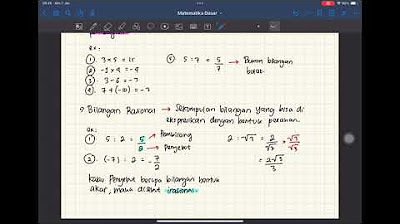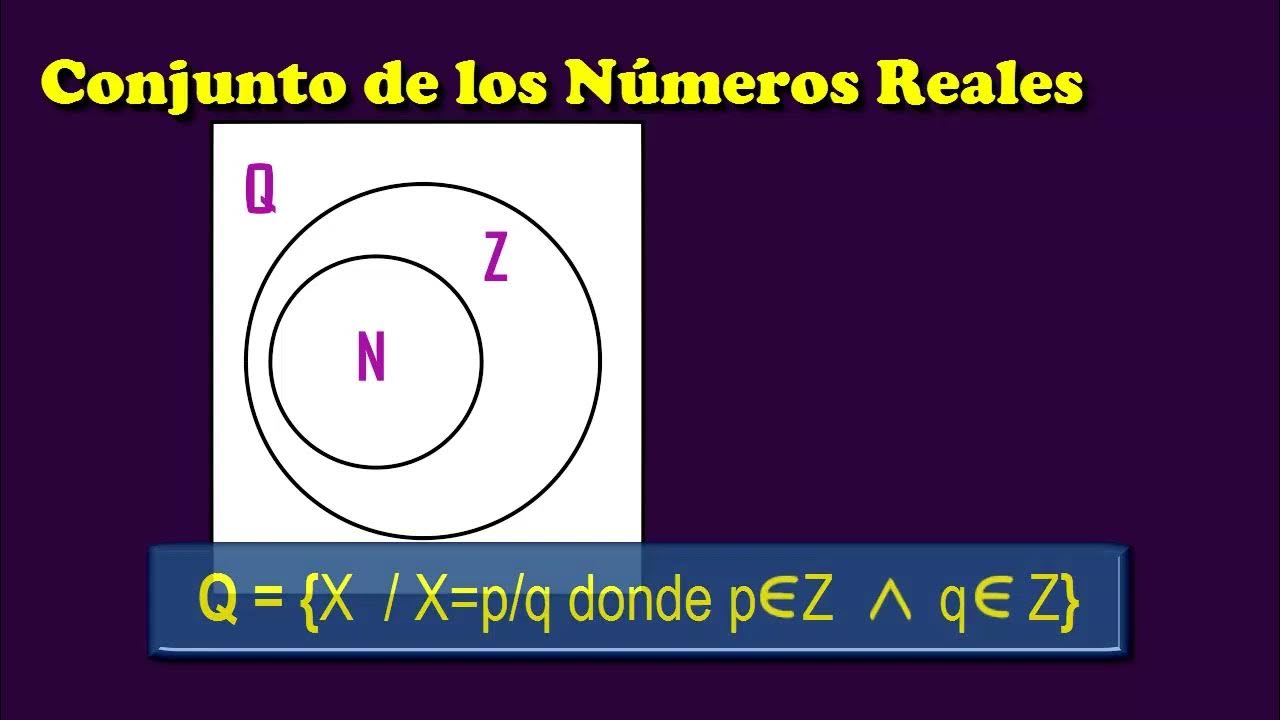Classification of Numbers (Natural, Whole, Integers, Rational, Irrational, Real) - Nerdstudy
Summary
TLDRThis educational video script delves into the classification of numbers, starting with natural numbers (excluding zero and negatives) and expanding to whole numbers (including zero). It then covers integers (whole numbers and their negatives), rational numbers (integers and fractions), and contrasts them with irrational numbers (non-repeating, non-terminating decimals like pi). The script concludes with real numbers, a comprehensive set encompassing both rational and irrational numbers. The analogy of Tokyo, Japan, and Asia helps clarify the hierarchical relationships between these classifications, emphasizing the importance of understanding these foundational mathematical concepts.
Takeaways
- 🔢 Natural numbers are the most basic classification of numbers and include counting numbers starting from 1, excluding 0 and negative numbers.
- 📏 Whole numbers include all natural numbers and also include 0, making them the next layer of numbers after natural numbers.
- 🔄 Integers encompass all whole numbers and their negatives, but do not include decimals or fractions.
- 🔍 Rational numbers include all previous classifications (natural, whole, integers) and also include decimals and fractions that can be expressed as a fraction of two integers.
- 🌐 Real numbers are the broadest classification and include all rational and irrational numbers combined.
- ⚖️ Irrational numbers are a separate set that cannot be expressed as fractions; they include non-repeating, non-terminating decimals like pi (π) and the square root of two.
- 🌐 The concept of set inclusion is important, where each number set is a subset of the next, with real numbers being the superset of all.
- 🔄 The script highlights the hierarchical relationship between different number sets, where each set is a subset of a larger set, except for irrational numbers which are separate from rational numbers.
- 📚 Understanding these classifications is crucial as they are foundational to mathematics and will be used repeatedly in various mathematical concepts.
- 🔑 The script uses analogies, such as counting starting from 1 and geographical locations, to help understand and remember the different classifications of numbers.
Q & A
What are natural numbers?
-Natural numbers include numbers such as 1, 2, 3, 4, 5, and so on. They are often referred to as counting numbers and do not include 0 or any negative numbers or decimals.
How do whole numbers differ from natural numbers?
-Whole numbers include all natural numbers and also include 0. While natural numbers start from 1, whole numbers start from 0.
What symbol is used to denote whole numbers?
-The script does not specify a unique symbol for whole numbers, but they are often denoted in the same way as natural numbers, with the understanding that they include 0.
What is the relationship between natural numbers and whole numbers?
-Every natural number is also a whole number, but not every whole number is a natural number since 0 is a whole number but not a natural number.
What are integers and how do they expand upon whole numbers?
-Integers include all whole numbers (0, 1, 2, 3, etc.) and also their negative counterparts (-1, -2, -3, etc.), but they do not include decimals or fractions.
What symbol is used to denote integers?
-The script does not provide a specific symbol for integers, but they are typically represented in mathematical notation without any special symbol, as they are a standard part of the number system.
What are rational numbers and how do they include integers?
-Rational numbers include all integers and can be expressed as a fraction where both the numerator and the denominator are integers, with the denominator not being zero. This means that every integer is a rational number.
What is a characteristic of a repeating decimal that makes it a rational number?
-A repeating decimal is considered a rational number because it can be expressed as a fraction. For example, 17 over 3 equals a repeating decimal of 5.666..., which is rational because it can be represented as a fraction of integers.
Can you provide an example of an irrational number and why it is considered irrational?
-An example of an irrational number is pi (π), which is a never-ending, non-repeating decimal without a pattern, making it impossible to express as a fraction.
What is the significance of real numbers in the classification of numbers?
-Real numbers encompass all rational and irrational numbers. They represent the broadest classification discussed in the script, including all the numbers from the previous classifications.
How does the script illustrate the concept of subset relationships among number classifications?
-The script uses the analogy of geographical locations (e.g., a person in Tokyo being in Japan and Asia, but not every person in Japan being in Tokyo) to illustrate that while smaller sets (like natural numbers) are always part of larger sets (like integers), the reverse is not always true.
Outlines

This section is available to paid users only. Please upgrade to access this part.
Upgrade NowMindmap

This section is available to paid users only. Please upgrade to access this part.
Upgrade NowKeywords

This section is available to paid users only. Please upgrade to access this part.
Upgrade NowHighlights

This section is available to paid users only. Please upgrade to access this part.
Upgrade NowTranscripts

This section is available to paid users only. Please upgrade to access this part.
Upgrade NowBrowse More Related Video
5.0 / 5 (0 votes)





